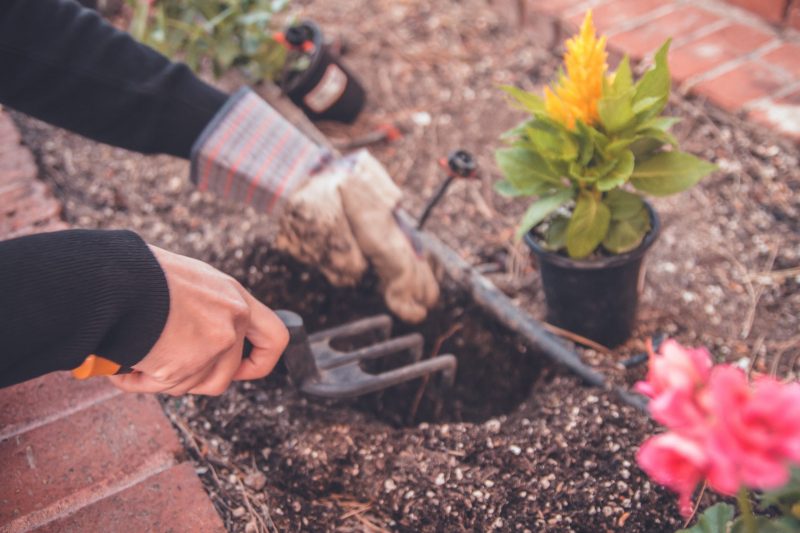Preventing Back Pain While Doing Yardwork
Well our lives seemed to dramatically change within the last few months due to the Covid-19 Pandemic. As a society we suddenly found ourselves at home with very few options of how to occupy our time. Some of us gravitated to Netflix, others to cooking and baking, some went to crafting, many started home projects and the majority of us, including myself, began to work on our yards and gardens as the spring and summer months approached. As I have transitioned back into the office and treating patients, I am commonly hearing about strained backs due to yardwork! Mowing, weeding, trimming, mulching, power washing, gardening, laying pavers will keep your yard looking its best! But maintaining your yard can cause injuries if proper precautions aren’t taken.
Tips to Prevent Back Pain During Yard Work.
WARM UP
If you are like me, then the majority of your yardwork is done in the early morning or the weekends when you have time. It is not necessarily a normal part of your daily routine. It’s important to keep your muscles and joints flexible before you begin working. Start off with a few jumping jacks, jog in place or jump rope. Take a 15-20 minute walk to get your blood flowing. Make sure to stretch to loosen your muscles. You want to have good flexibility along with range of motion.
WEAR SUPPORTIVE SHOES
Your feet support the weight of your entire body and help to keep you in proper alignment and balanced. Wearing a pair of worn out shoes, or ones with little support may increase your risk of back pain. For safety reasons, I recommend a closed toe shoe with an adequate support for your arches. If you have flat feet or other foot issues, you may benefit from an orthotic in your shoe. Flip flops and sandals aren’t the best choice for working outside as it increases the likelihood of you slipping if areas are wet.
USE YOUR LEGS
Poor lifting techniques can lead to stressed or strained back muscles. Before you attempt to lift a bag of mulch or move a heavy flower pot, place your feet about 18” apart to increase stability. Bend your knees when you lift to reduce stress on your back. As you pick up an object, hold it close to your body, and use the muscles in your legs, not your back to lift.
KNOW YOUR LIMITATIONS
You may be able to lift those heavy paving stones or bags of mulch and rock by yourself, but should you? If you know that you will struggle to carry an object a few feet then it’s best to ask for help. Although you may not notice immediate problems, soreness and pain can set in just a few hours later. Utilize wagons, dolly carts, rolling plant stands or recruit some family support to help with the heavier lifting.
TAKE BREAKS
You are more likely to suffer from muscle or joint pain if you remain in one position for too long. Hunching over in the garden bed or staining your deck or furniture can cause aches and pains in your neck and back. Most people primarily use their dominant hand when working. Digging or raking with the same hand for hours may stress the that side of your body and increase tightness and pain. Stand up, walk, and stretch every 30-40 minutes to work out the kinks.
RECOVERY
After a long day or weekend working in the yard, it is important to allow for muscle recovery as well as replenishing your energy stores. Drink lots of fluids and hydrate. Take an Epsom Salt Bath to minimize muscular tension and allow for healing of damaged tissue. If you notice tightness and soreness, incorporate stretching, foam rolling and gentle yoga poses. Eat balanced and nutritious meals. And most importantly, get 7-9 hour of sleep.
We here at 360 Sports, Spine and Wellness want your yard to look beautiful, but not at the expense of your back! Use these techniques to minimize stress, strain and injury. Keep balanced, properly aligned and stay flexible. We look forward to seeing images of your yard work and hard work.
This blog provides general information and discussion about medicine, health and related subjects. The words and other content provided in this blog, and in any linked materials, are not intended and should not be construed as medical advice. If the reader or any other person has a medical concern, he or she should consult with an appropriately-licensed physician or other health care worker. Never disregard professional medical advice or delay in seeking it because of something you have read on this blog or in any linked materials. If you think you may have a medical emergency, call your doctor or 911 immediately. The views expressed on this blog and website have no relation to those of any academic, hospital, practice or other institution with which the author is affiliated. Accessing, reading or otherwise using the Site does not create a physician-patient relationship between you and the Principal author. Providing personal or medical information to the Principal author does not create a physician-patient relationship between you and the Principal author or authors. Nothing contained in the Site is intended to establish a physician-patient relationship, to replace the services of a trained physician or health care professional, or otherwise to be a substitute for professional medical advice, diagnosis, or treatment.

